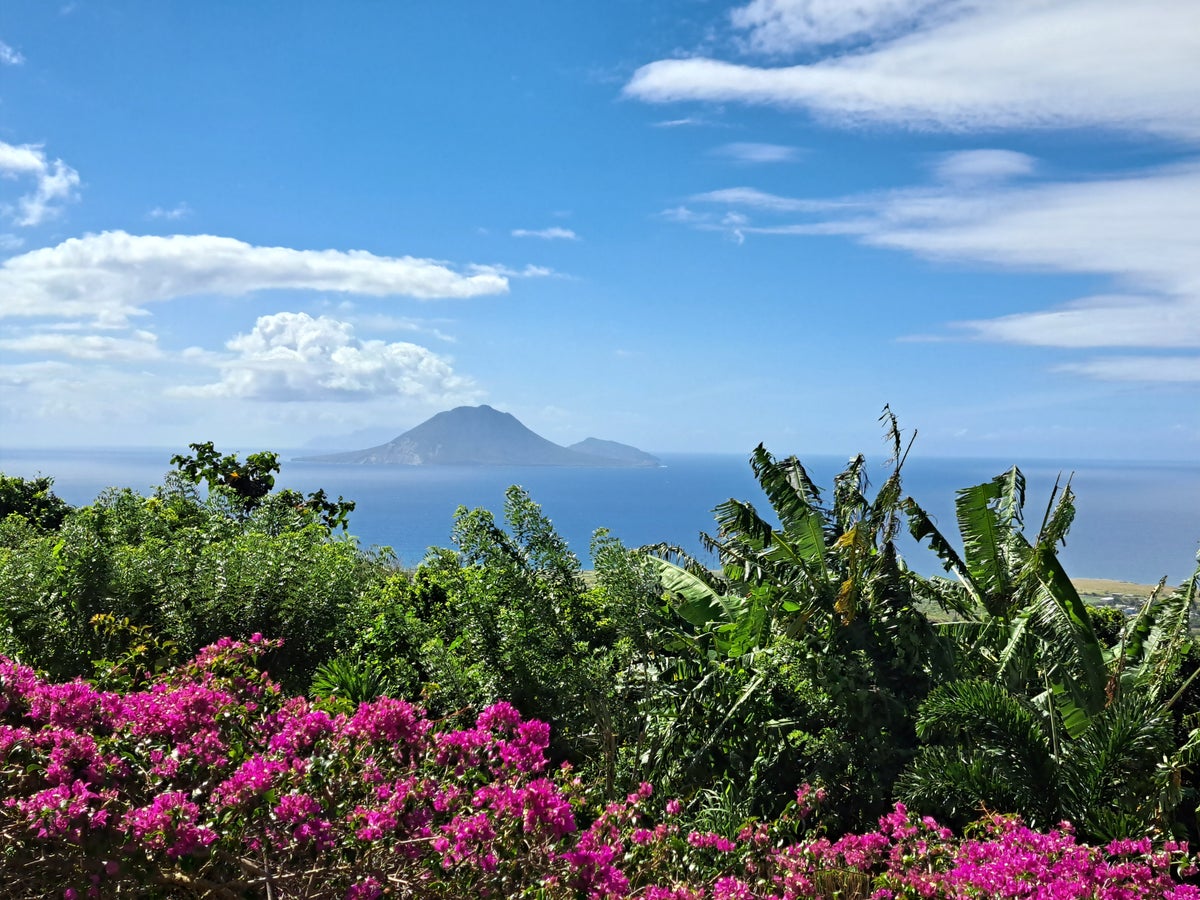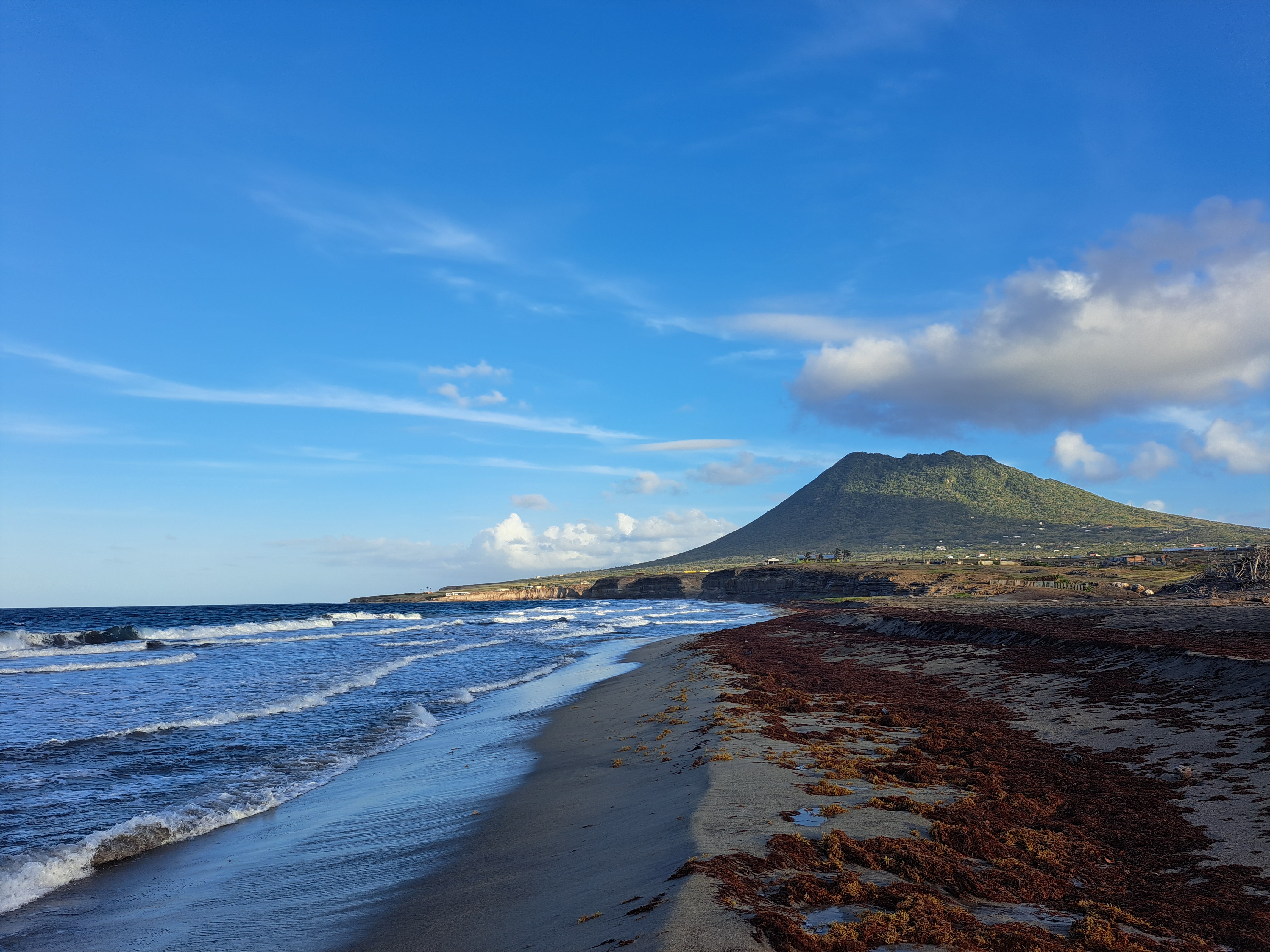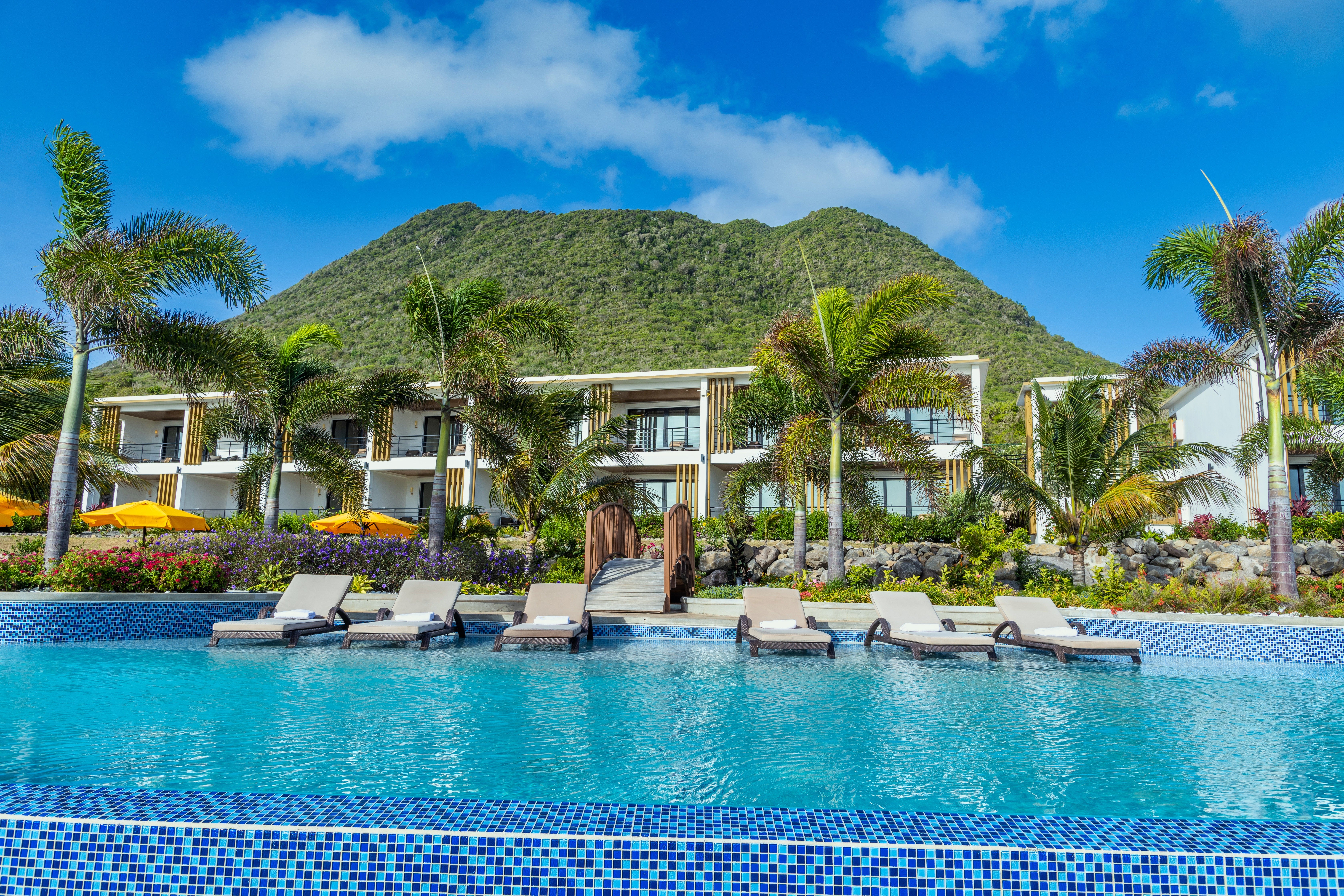
Not every day begins with a hike up a dormant volcano. With dry leaves rustling underfoot on a trail stitched together by twisted roots, I marched up the forested slopes of The Quill towards its caldera.
Cinnamon trees scented the air as we passed, songbirds and doves tweeted and cooed. Arriving at the crater, we peered into its jungle-filled basin, deep and primeval, where I wouldn’t have been surprised to stumble upon dinosaurs. Onwards, and a final push saw us emerge at the highest point on Sint Eustatius.
From this lofty perch, the neighbouring isles of Sint Maarten, Saba and St Barth’s dot the sea, while directly below are the rooftops of Oranjestad, this island’s only town. At little more than 11 square miles, we could pretty much see all of Sint Eustatius; or Statia, as it’s known locally.
Not familiar with either name? You wouldn’t be alone. Beyond the Netherlands (of which this is a special municipality) and the Caribbean region itself, Statia has a peculiarly low profile. That’s partly because, until late last year, it wasn’t convenient to reach from Britain, with travellers having to take indirect flights to Sint Maarten, then onward connections. But thanks to new ferry services from adjacent (and much easier to reach) St Kitts, Statia now finds itself handily placed for hassle-free island-hopping.
Read more on Caribbean travel:
- Eight best Caribbean holidays and countries to visit
- Barbados travel guide: Where to go and what to see on the Caribbean island
- Revealed: The 50 best beaches in the world

After spending a few chilled-out days in St Kitts checking out its extensive beach bar scene, Oranjestad felt ramshackle and sleepy as I stepped off the ferry: but therein lies its charm. With no port for cruise ships, and no mass-market hotels, Statia resembles the Caribbean of several decades ago. And although locals take pride in their island’s under-the-radar status, Sint Eustatius wasn’t always so quiet.
When I made it down from The Quill (whose name, a corruption of the Dutch word “kuil”, references the “pit” of the volcano’s crater), I popped into the local museum and found a surprising history – one at odds with the island as it is today.
“The Dutch colonised Statia in 1636,” I was told by a museum guide, Misha Spanner, as we pondered old paintings and artefacts. “By the 18th century, it had grown into one of the world’s busiest trading ports, shifting textiles, tools, ceramics, sugar, indigo and rum between the Americas and Europe.”
Statia’s waterfront was a commercial hub served daily by hundreds of tall ships, making its Golden Age colonial masters exorbitantly wealthy.

Statia’s success did not go unnoticed in an era when the British, French and Dutch were often at war. The island changed hands 22 times throughout this period until, in 1781, a British occupation and subsequent French invasion brought its trading dominance to an end. Waterfront warehouses, taverns and shops fell into disrepair, leaving them open to total destruction by hurricanes and earthquakes.
The result is that, today, there’s little left to recall Statia’s prominence beyond a shoreline littered with broken walls and tumbledown ruins. The handful of buildings still standing are now a dive shop, restaurant and The Old Gin House hotel.
Though the wreckage gives the beach a post-apocalyptic air, it’s a different story where the debris extends into the sea.
Here, fallen masonry and a submerged sea wall have become life-filled artificial reefs. Keen to cool off after my museum tour, I rented snorkelling equipment and dived into this underwater world. It’s populated by fish sporting neon flashes and stripes, some decked out in the colours of every crayon in the pack. And although I didn’t see the turtles that apparently frequent the bay, rusty anchors and cannons encrusted with corals are ample compensation.

Snorkelling and diving turn out to be Statia’s trump card. It’s surrounded by a marine park larger than the island itself, with 36 recognised dive sites spanning wrecks, reefs, drop-offs and lava formations – attributes upon which Golden Rock Resort, the island’s newest hotel, hopes to capitalise. Launched last year, it’s located at the foot of The Quill looking out to St Barth’s. I headed there to round off my day in style.
Compared to the rough-and-ready ambience elsewhere on the island, Golden Rock felt like I’d time-hopped 10 years into the future. Spread across 40 acres, its rooms and villas have contemporary architecture, high-spec interiors and are soon to be joined by a dive school and beach club.
As I settled into a booth at Breeze, the resort’s indoor-outdoor restaurant, golden hour’s glow ignited the clouds with the last pink rays of the day. It seems a promising omen for this historically significant isle, which seems poised on the brink of a new era of prosperity.
Travel essentials
Getting there
British Airways flies to St Kitts twice weekly from Gatwick.
Makana Ferry Service covers St Kitts, Sint Maarten, Saba and Statia. St Kitts-Statia journeys take an hour and cost $80 (£65) return.
Staying there
Stay near the port at The Old Gin House from $222 (£179), B&B.
Rooms available from{{#price}}{{price}}per night{{/price}}{{^price}}Check availability for dates and prices{{/price}}
Rates provided by Booking.com
Or try Golden Rock Resort from $196 (£159).
Rooms available from{{#price}}{{price}}per night{{/price}}{{^price}}Check availability for dates and prices{{/price}}
Rates provided by Booking.com
More information
Scubaqua offers dives from $59 (£48); or rent snorkel sets from $20 ((£16).
Read more on the best winter sun hotels







